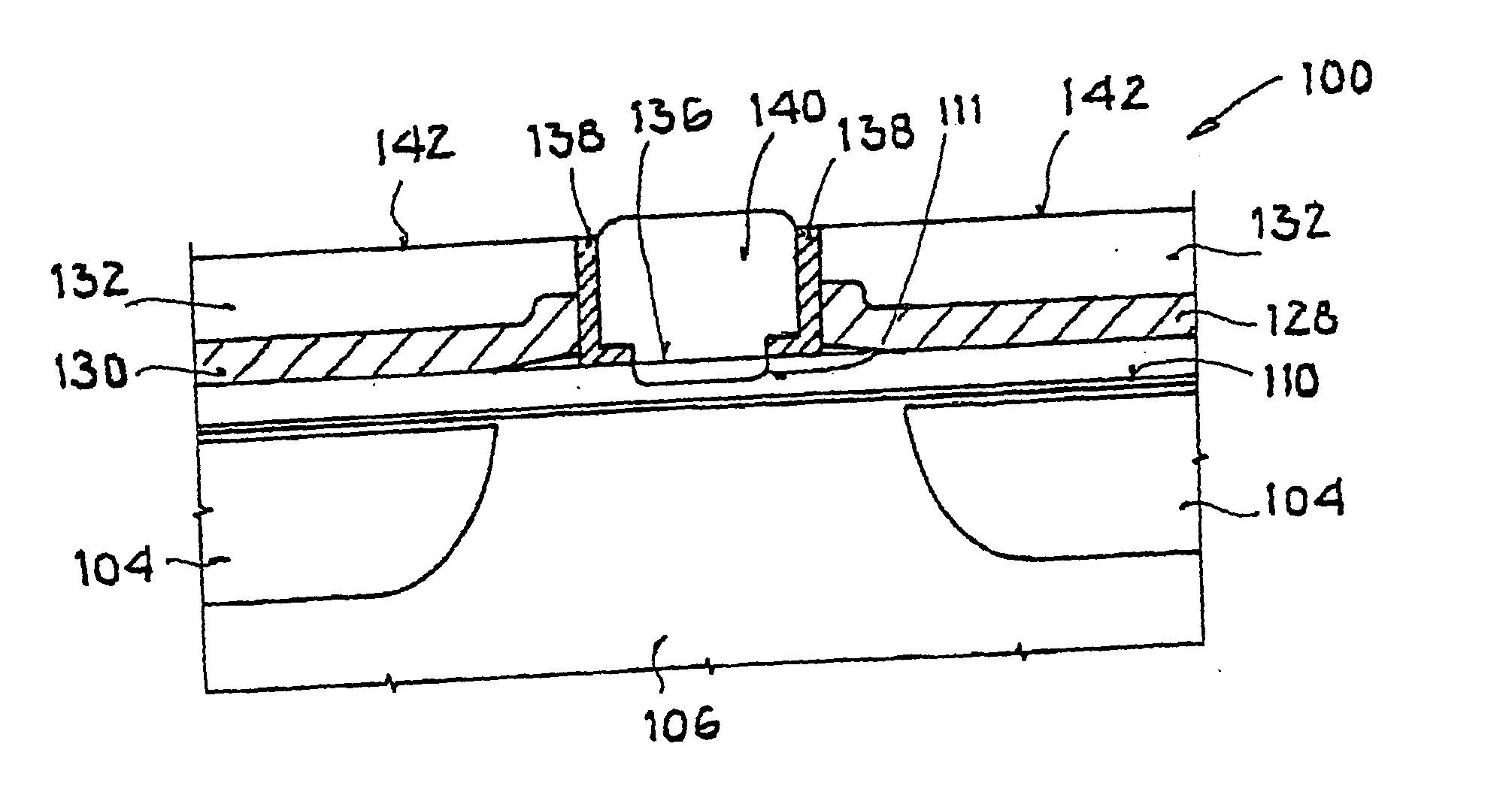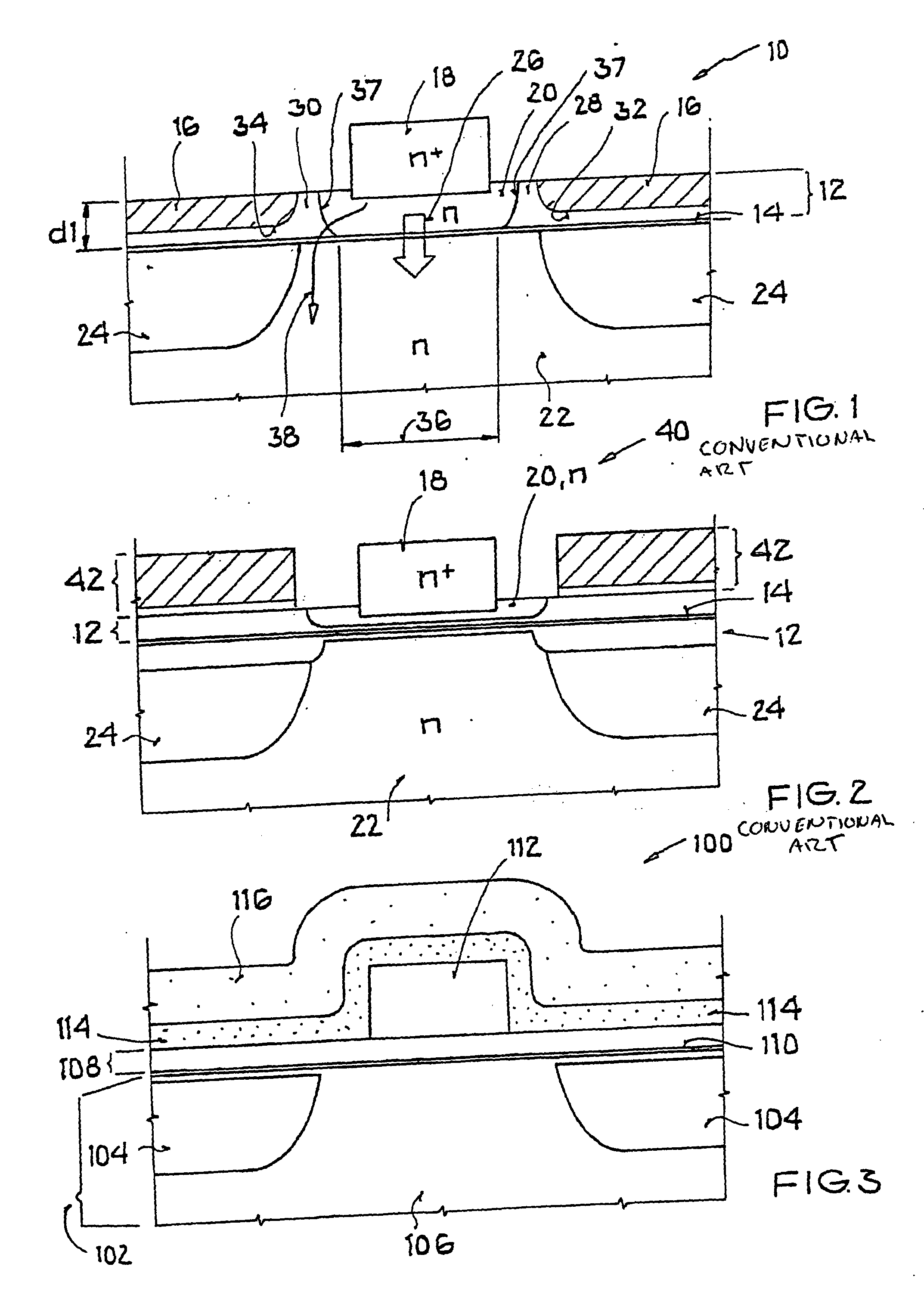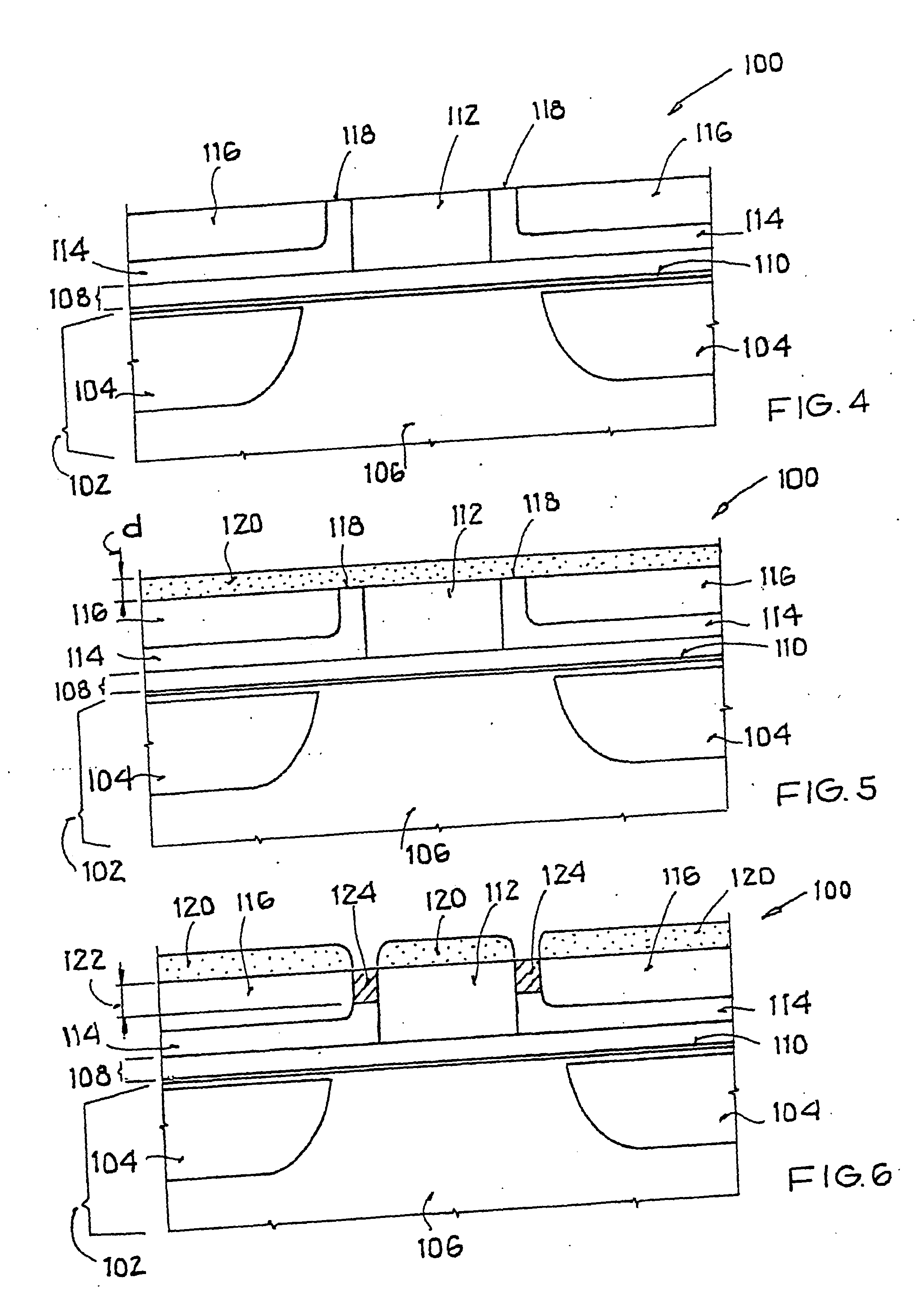Process for producing a base connection of a bipolar transistor
a bipolar transistor and base connection technology, applied in the direction of transistors, electrical devices, semiconductor devices, etc., can solve the problems of reducing the electrical properties of the resulting component, affecting the electrical properties of the component, and requiring the process from d2 for selective epitaxy, so as to achieve low resistance and capacitance values, and simplify manufacturing
- Summary
- Abstract
- Description
- Claims
- Application Information
AI Technical Summary
Benefits of technology
Problems solved by technology
Method used
Image
Examples
Embodiment Construction
[0067] In the drawings, like elements are labeled with like reference symbols.
[0068] In FIG. 1, which illustrates a first conventional process as described above, number 10 designates a semiconductor structure with a comparatively thick doped silicon layer 12, e.g., the layer of thickness d1 over a thin SiGe base layer 14. The thickness d1 is dimensioned here such that sufficient material is available for silicidizing the base connection. Hatched regions 16 represent silicidized regions. Block 18 represents a highly n-doped emitter region. The number 20 designates a less highly n-doped emitter region, and the number 22 designates an n-doped collector region with a lateral STI isolation 24. The section of the semiconductor structure 10 shown thus contains a hetero-bipolar transistor (HBT) having emitter regions 18, 20, SiGe base layer 14, and collector region 22. The number 26 represents a regular HBT current flowing in later operation. In such an HBT implementation having a thick s...
PUM
 Login to View More
Login to View More Abstract
Description
Claims
Application Information
 Login to View More
Login to View More - R&D
- Intellectual Property
- Life Sciences
- Materials
- Tech Scout
- Unparalleled Data Quality
- Higher Quality Content
- 60% Fewer Hallucinations
Browse by: Latest US Patents, China's latest patents, Technical Efficacy Thesaurus, Application Domain, Technology Topic, Popular Technical Reports.
© 2025 PatSnap. All rights reserved.Legal|Privacy policy|Modern Slavery Act Transparency Statement|Sitemap|About US| Contact US: help@patsnap.com



